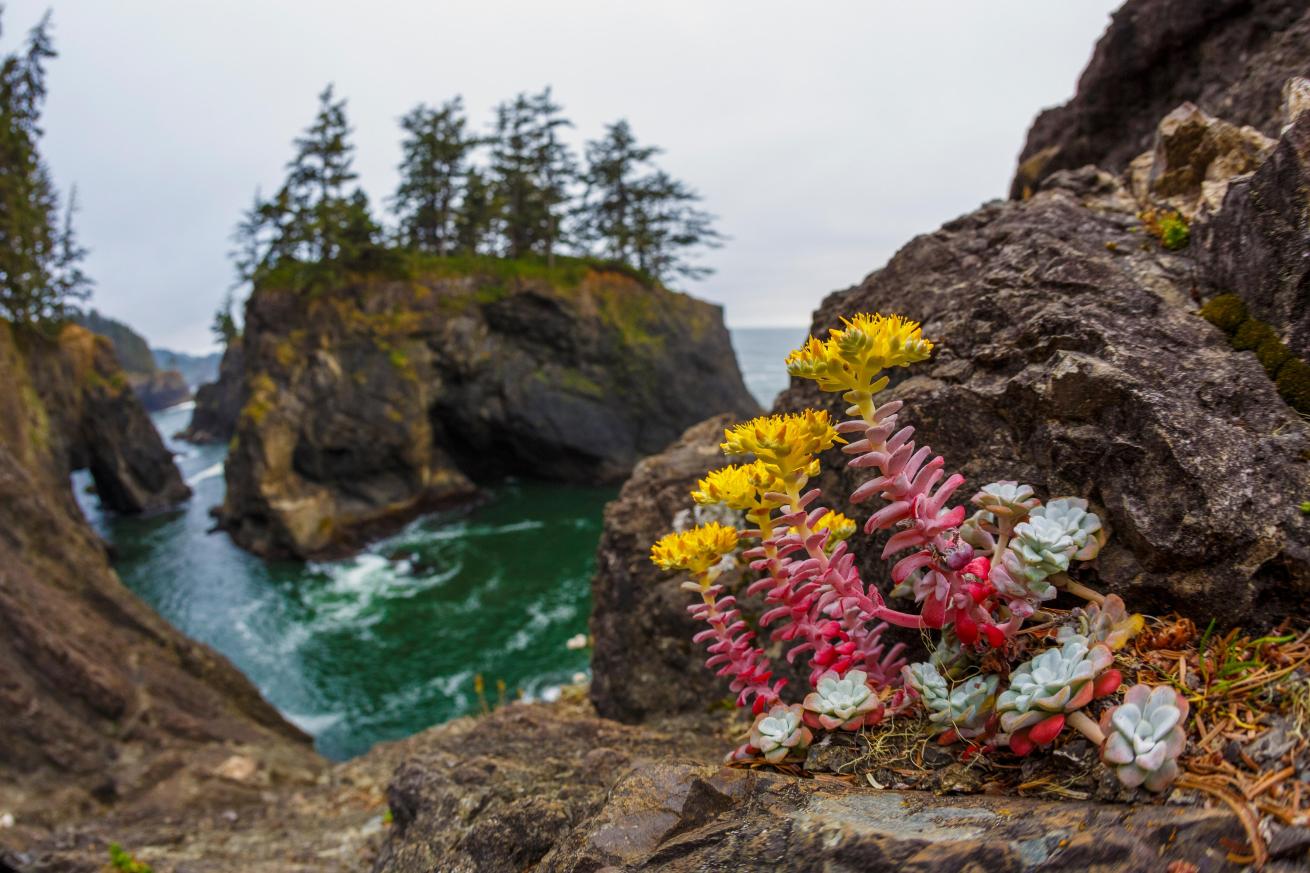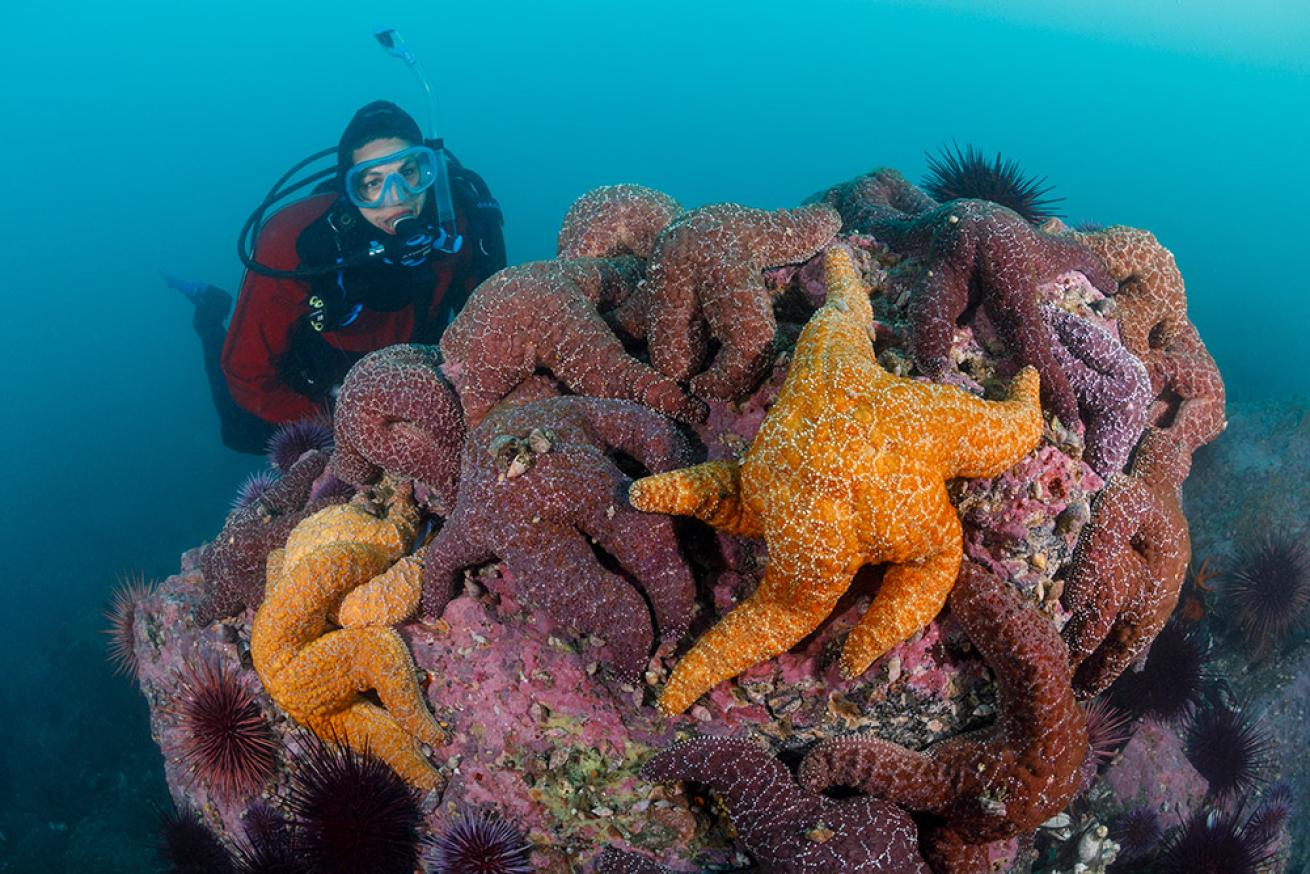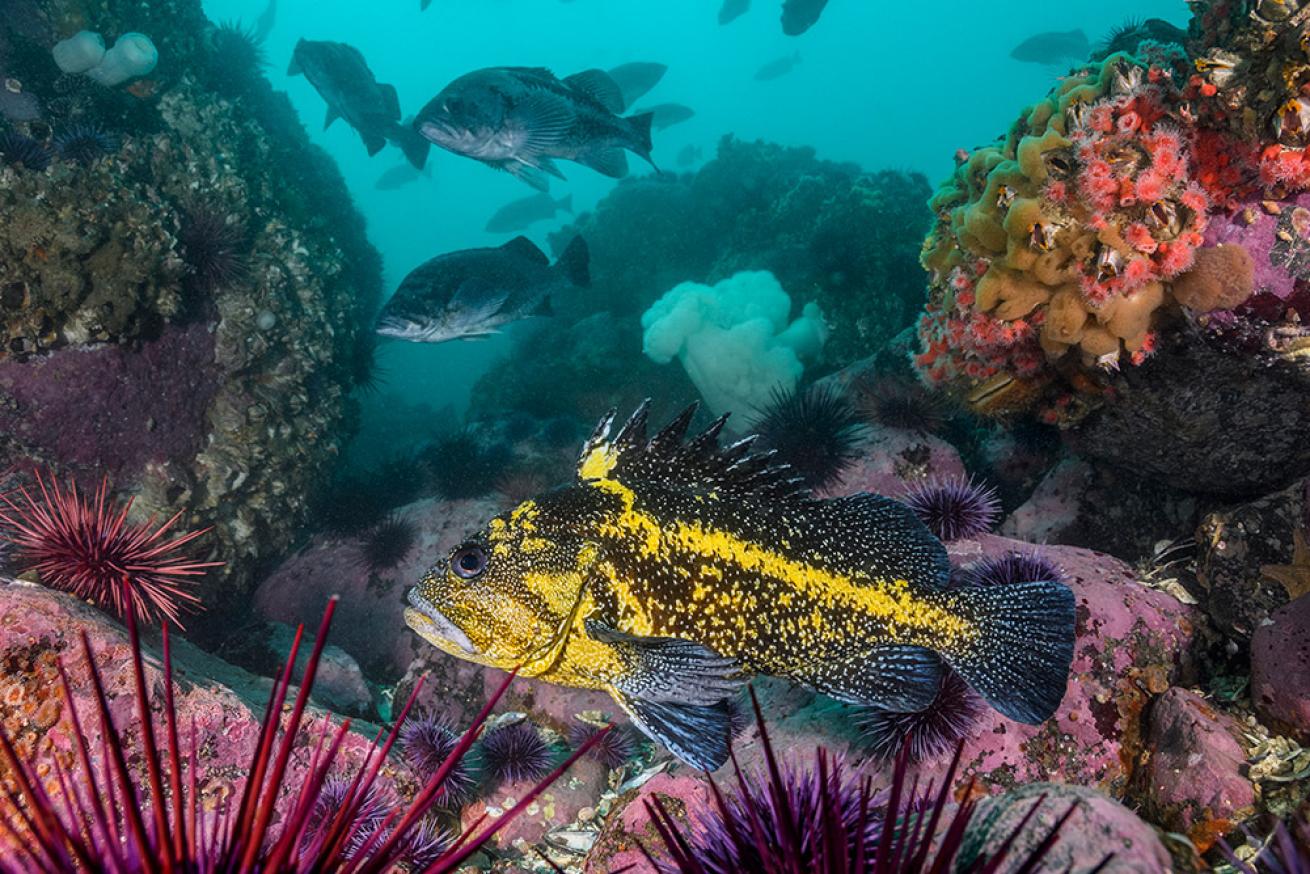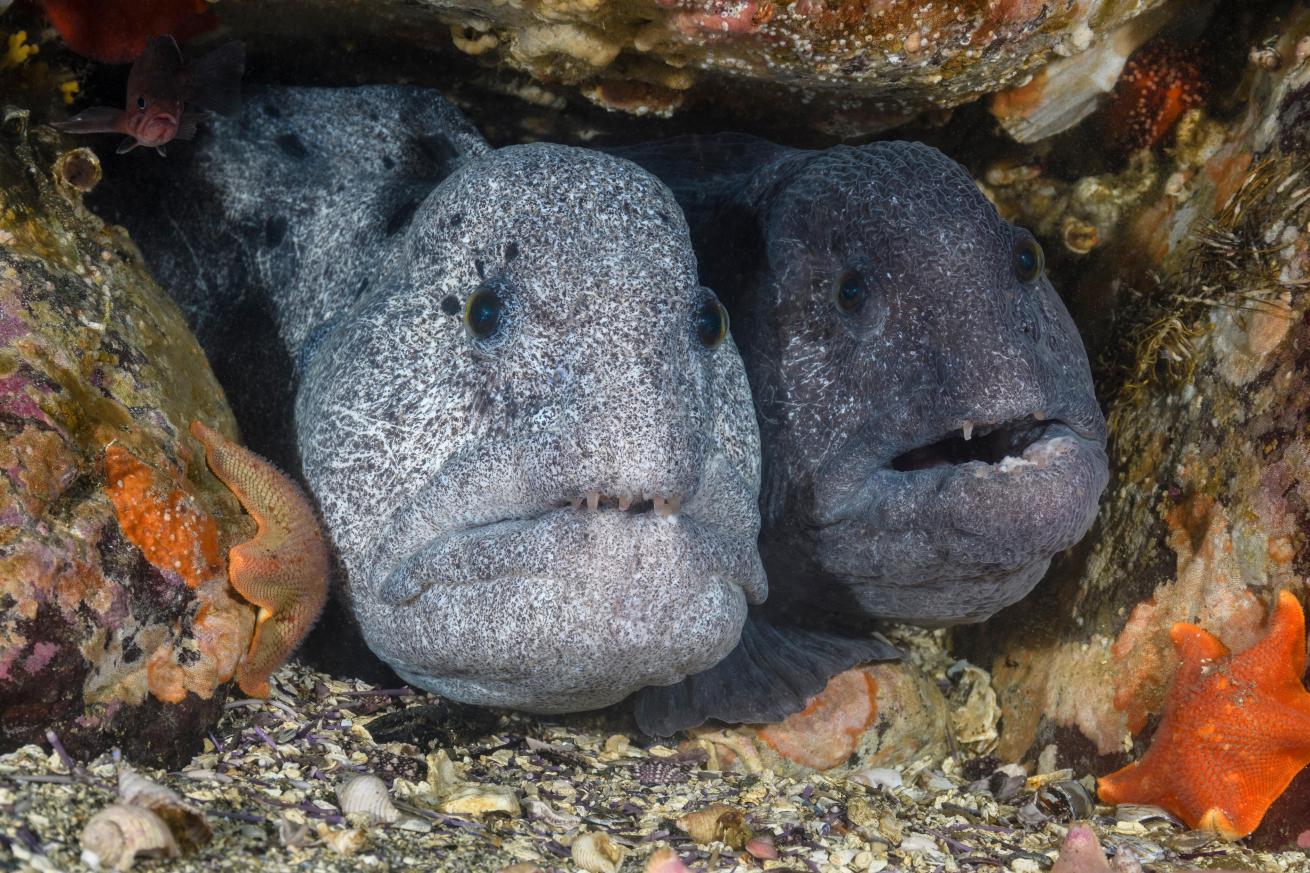5 Best Dive Sites on Oregon’s South Coast

Brandon ColeOregon's captivating coastline and dramatic views are found above and below the water.
Do you dream of mystical kelp forests, barking sea lions and cool Pacific waters that lay home to everything from stunning white sea anemones to colorful sea stars larger than your hand? If your heart beats in anticipation of a cold water dive, pack your drysuit and look no further.
This dream is a reality on the south coast of Oregon, which hosts a wide variety of underwater landscapes including boulders, walls, caves and swim throughs. The biodiversity is supreme: fish, invertebrates and seaweeds like both strawberry and white plumose anemone, black and blue rockfish, tiny hermit crabs and countless sea stars and urchins.
“The Oregon Coast is rugged, wild and full of adventure,” says dive guide Dave Lacey. Lacey, who owns South Coast Tours, recommends the Oregon coast for those experienced with more advanced conditions and in cold water. “Trust the locals and avoid going when there is too much swell or wind.” The best time to visit is spring and fall, either before or after the summer trade winds to ensure the best visibility.
Ready to visit Oregon’s underwater gems? Put these five favorite sites on your to-dive list, as recommended by Lacey.
1. Nellies Cove/Orford Heads
Located just offshore from Port Orford, Nellies Cove (also called Orford Heads) offers a diverse underwater landscape while staying well-protected from both the swell and the wind. “You can dive around boulders or walls and even some caves,” says Lacey. “It is common to find harbor seals, lots of rockfish, and the summer-feeding aggregate gray whale in this sheltered area.”
Additionally, conservation and sustainability efforts can be witnessed firsthand: In 2017, urchin divers, sport divers and scientists noticed rising water temperatures causing an extreme disruption in the ecosystem of Orford Reef and nearby Nellies Cove. While the kelp population was suffering a decline, there had been a 10,000-fold increase of purple urchins in only three years. In response, these concerned citizens and scientists formed the Oregon Kelp Alliance (ORKA) to help preserve kelp forests.
Max. depth from 60-80 feet

Brandon ColePisaster ochraceus sea stars at Redfish Rocks Marine Reserve.
2. Redfish Rocks Marine Research Reserve
Four miles south of Port Orford, the Redfish Rocks Marine Research Reserve has been a protected area of the Pacific Ocean for over a decade. “Redfish Rocks offers one of the most diverse diving options in all of Oregon, as divers can find pinnacles, boulders, cobble, kelp forest and it is known for its high relief habitat with lots of ledges and drop offs,” Lacey explains. He continues, “being that it has been a marine reserve for more than 10 years, the diversity of animals to be seen is unparalleled: from fish to invertebrates.”
Max. depth around 100 feet
Related Reading: Top 3 Reasons to Visit the Diving Capital of Latin America

Brandon ColeBull kelp (Nereocystis luetkeana) in Redfish Rocks Marine Reserve.
3. Island Rock/Whale Island
Home to a variety of marine life and landscape, the Island Rock (also known as Whale Island) is a place to experience wall diving with a plethora of sub-tidal animals (those unaffected by the tides and thus are always underwater). “The island is known for its huge ling cod [(Ophiodon elongatus)], enormous ochre sea stars [(Pisaster ochraceus)], but also substantial wolf eels [(Anarrhichthys ocellatus)] are a common surprise,” explains Lacey. “There’s a legend of a swim through tunnel that takes divers through the island where there are common grey whale [(Eschrilchtius robustus)] sightings, hence the locals named it Whale Island.”
Max. depth greater than 100 feet

Brandon ColeChina rockfish (Sebastes nebulosus) swims amongst boulders and sea urchins while black rockfish (Sebastes melanops) hover above at Island Rock (also called Whale Island).
4. Rogue Reef
Planted just offshore of the community of Gold Beach and the world-famous Rogue National Wild and Scenic River, Rogue Reef is a massive reef and island complex. It hosts a huge kelp forest and one of the largest Steller sea lion (Eumetopias jubatus) colonies in the Pacific northwest. Lacey highlights several species of rockfish found here, as well as frequent grey whale sightings throughout their summer migration months.
Max. depth 70-100 feet
Related Reading: Best Dive Spots to Take Away Your Summertime Sadness

Brandon ColeMated pair of wolf eels (Anarrhichthys ocellatus) peeking out of their den amidst boulders.
5. Goat Island/Bird Island
This largest island in Oregon, located just north of Brookings and off Harris Beach State Park, Goat Island (also known as Bird Island), can be accessed from the beach or by boat charter. “This island,” says Lacey, “like all offshore islands in Oregon, is a part of the Oregon Islands National Wildlife Refuge. You can find quite the variety of critters under the water here from nudibranchs to giant Pacific octopus (Enteroctopus dofleini).”
Max. depth 50-70 feet










